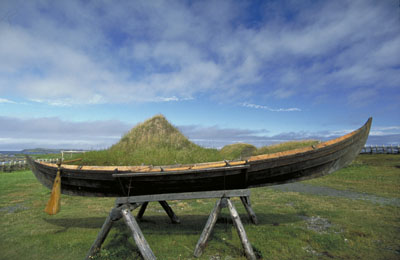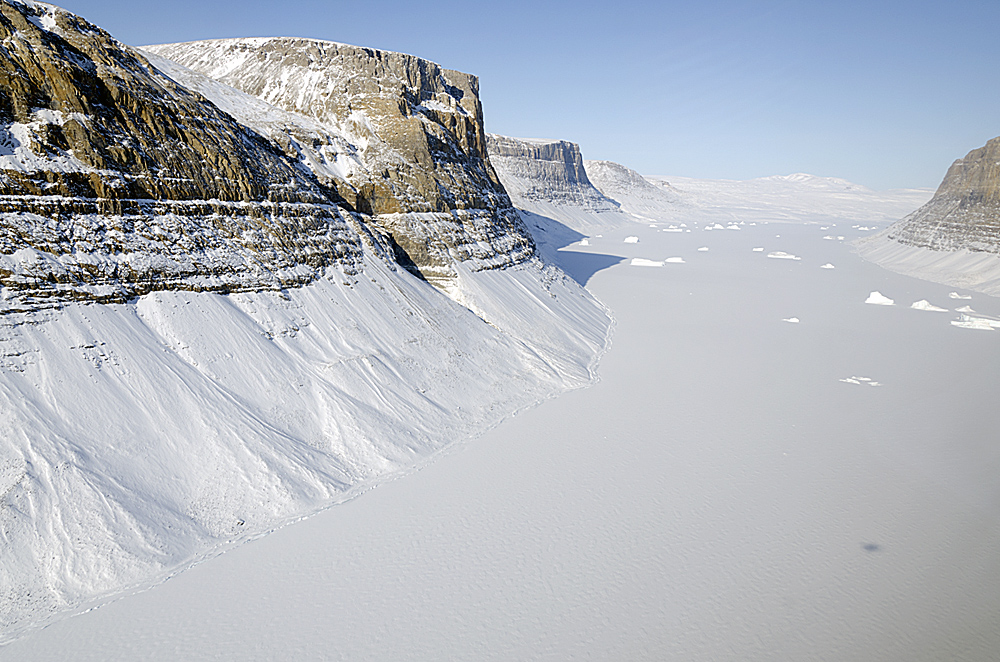The establishment of the Norse settlements in southwestern Greenland in the late 10th century CE marked the first permanent European settlement in North America. The Norse would make frequent trips north and west of their Greenland colonies and would even establish at least one archaeologically attested settlement in northern Newfoundland (see L’Anse aux Meadows). During these exploratory expeditions into the Arctic and eastern North America, the Norse would encounter a variety of Indigenous North American groups.
Voyages According to Norse Historical Records
Various Icelandic sagas from the Middle Ages tell tales of Norse voyages, such as The Saga of the Greenlanders, The Saga of Erik the Red, The Book of Icelanders, The Book of Settlements, The Saga of Olaf Tryggvason and The Saga of the People of Eyri. Though details vary between these sources, collectively, they describe the various Norse voyages around the north-earthen coast of North America from the Norse perspective.
In 985 or 986 CE, an Icelandic flotilla led by Eric the Red set out to colonize southwest Greenland. Near summer's end, Bjarni Herjolfsson, a trader, sailed to join them but was blown far off course. He coasted north to the latitude of southern Greenland, then turned east to complete his intended voyage, becoming the first European of certain record to have reached the American mainland. His first sighting of land was probably of Newfoundland, from which he coasted north, at least to the termination of Labrador. The more southerly lands he found were well forested. At about the turn of the century, Eric the Red's eldest son, Leif Ericsson, decided to exploit Bjarni Heriolfsson's discovery.
Retracing Bjarni Heriolfsson's route in reverse, Leif Ericsson explored three distinct regions. In the north was Helluland, Land of Stone Slabs, an area that had nothing but glaciers, mountains and rock. This must be the area from the Torngat Mountains to Baffin Island. Farther south was Markland, Land of Forests, probably a large region around Hamilton Inlet in central Labrador. South of there was Vinland. Here Leif Ericsson established a base camp from which he launched a systematic exploration of neighbouring areas. During his explorations, he came upon wild-growing grapes wound around tall trees. Enchanted, he named the area Vinland, Land of Wine, and brought both wine and lumber back to Greenland.
Leif Ericsson's voyage was followed by further expeditions, all led by members of Leif Ericsson's family. The first was headed by his brother Thorvald, who died during a skirmish with Indigenous people. The second was by his brother Thorstein, who never reached land. A third expedition was under the command of Thorfinn Karlsefni, married to Gudrid, the widow of Thorstein. Thorfinn Karlsefni's expedition has been vastly glorified and magnified in The Saga of Erik the Red version of the Vinland Sagas. The last recorded expedition was led by Leif Ericsson's sister Freydis in partnership with two Icelandic traders. This expedition ended in disaster when Freydis had her people kill her Icelandic partners and their crew.

The Saga of Erik the Red and The Saga of the Greenlanders complement each other with regard to details of the various expeditions. The base camp was called Straumfjord, meaning Current Fjord, and was located in the northern part of Vinland, probably in the Strait of Belle Isle area, at Epaves Bay on the northern tip of Newfoundland (see L'Anse aux Meadows). Another camp, used only in the summer, was Hop, meaning small land-locked bay, and located in southern Vinland. It was here that grapes and good timber were harvested for shipment back to Greenland. It was also here that the Norse encountered Indigenous people, with whom they had various skirmishes. Winters were spent at Current Fjord; summers were spent in reconnaissance and exploitation of resources to be shipped back to Greenland. A third location, mentioned only in The Saga of the Greenlanders, is Leifsbuxir, or Leif Ericsson's camp. Leif Ericsson's camp encompasses elements from both Hop and Straumfjord but is, in essence, synonymous with Straumfjord.
The Norse voyages to Vinland lasted only a few years, probably because the fledgeling new colony in Greenland, numbering only a few hundred, had no need for additional land. The resources of Vinland were too distant to be useful. Vinland was as distant from Greenland as Norway, and the same products could be obtained in Europe, where other necessities such as iron, grain, salt, and spices were also available. However, knowledge of North America persisted among the Norse in Greenland, and there were occasional visits to Markland (Labrador) for lumber.


 Share on Facebook
Share on Facebook Share on X
Share on X Share by Email
Share by Email Share on Google Classroom
Share on Google Classroom








